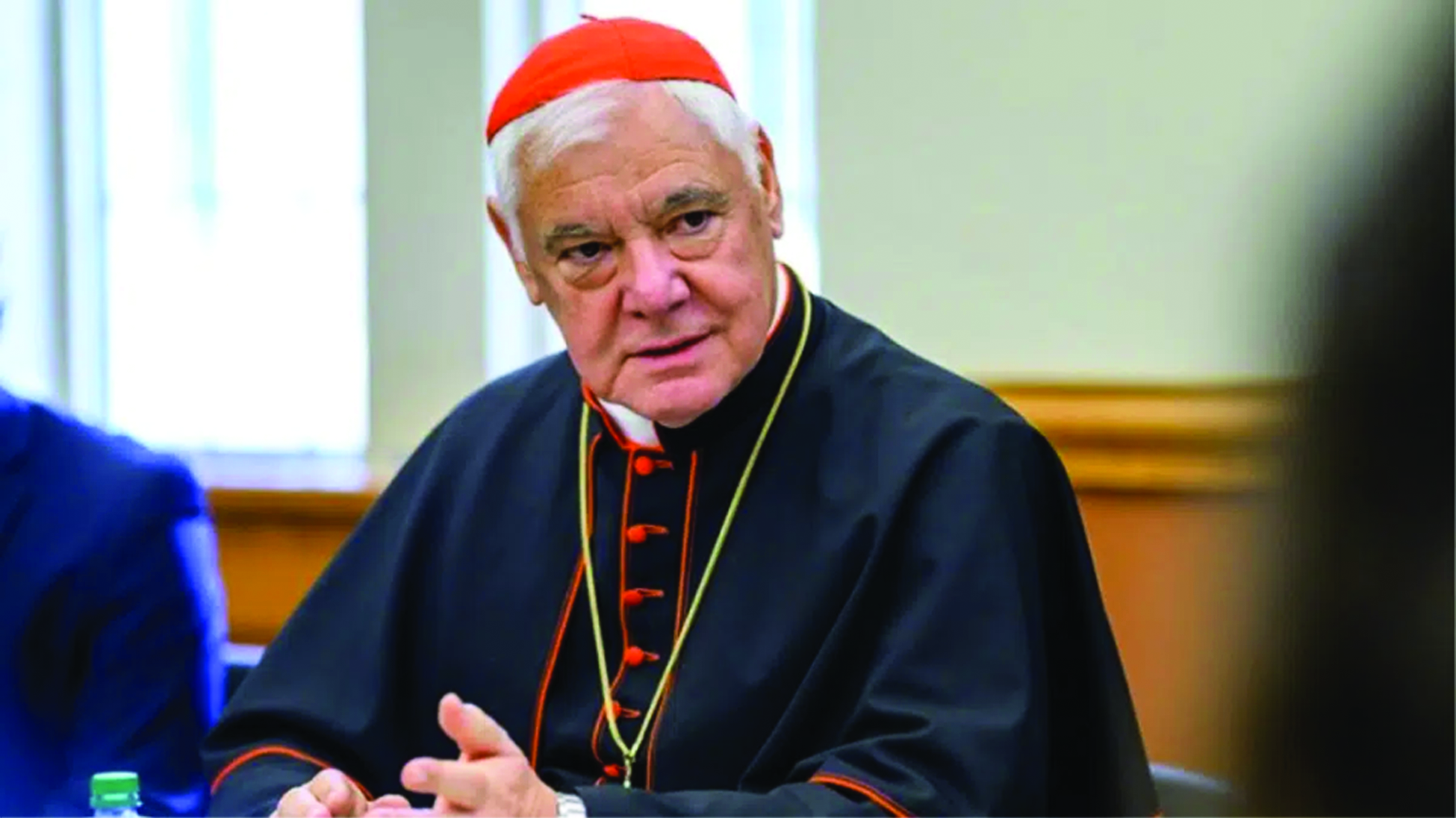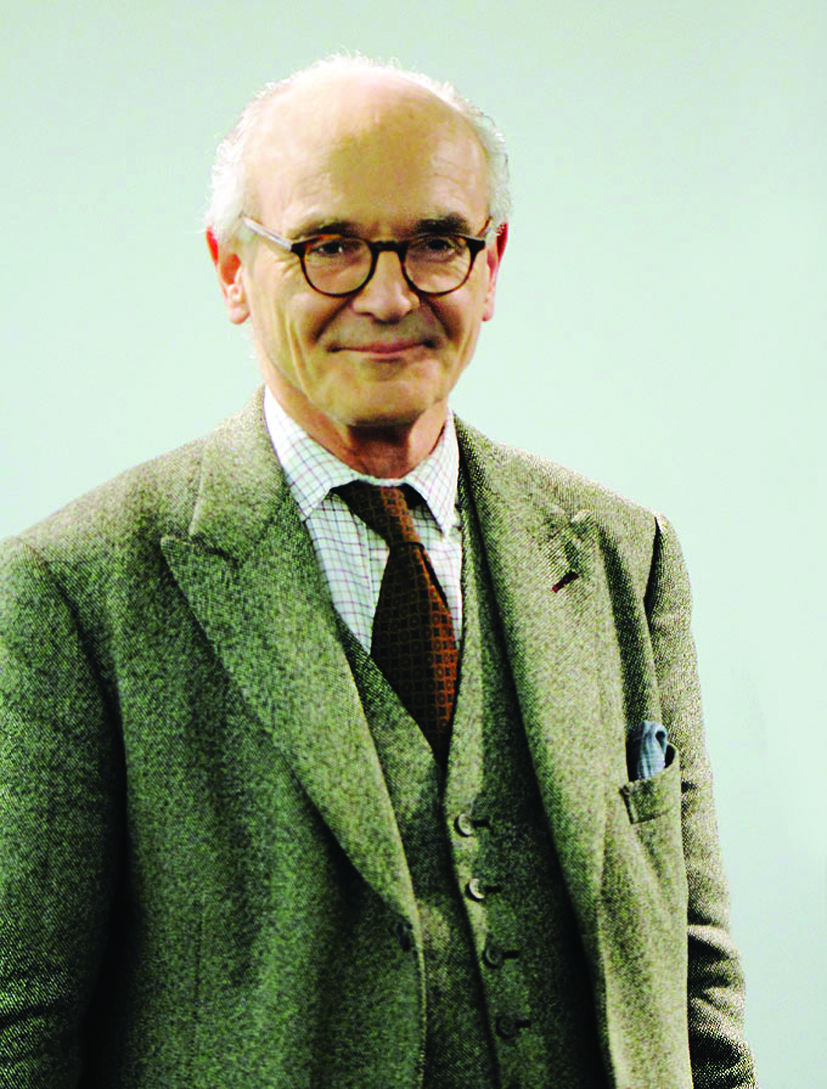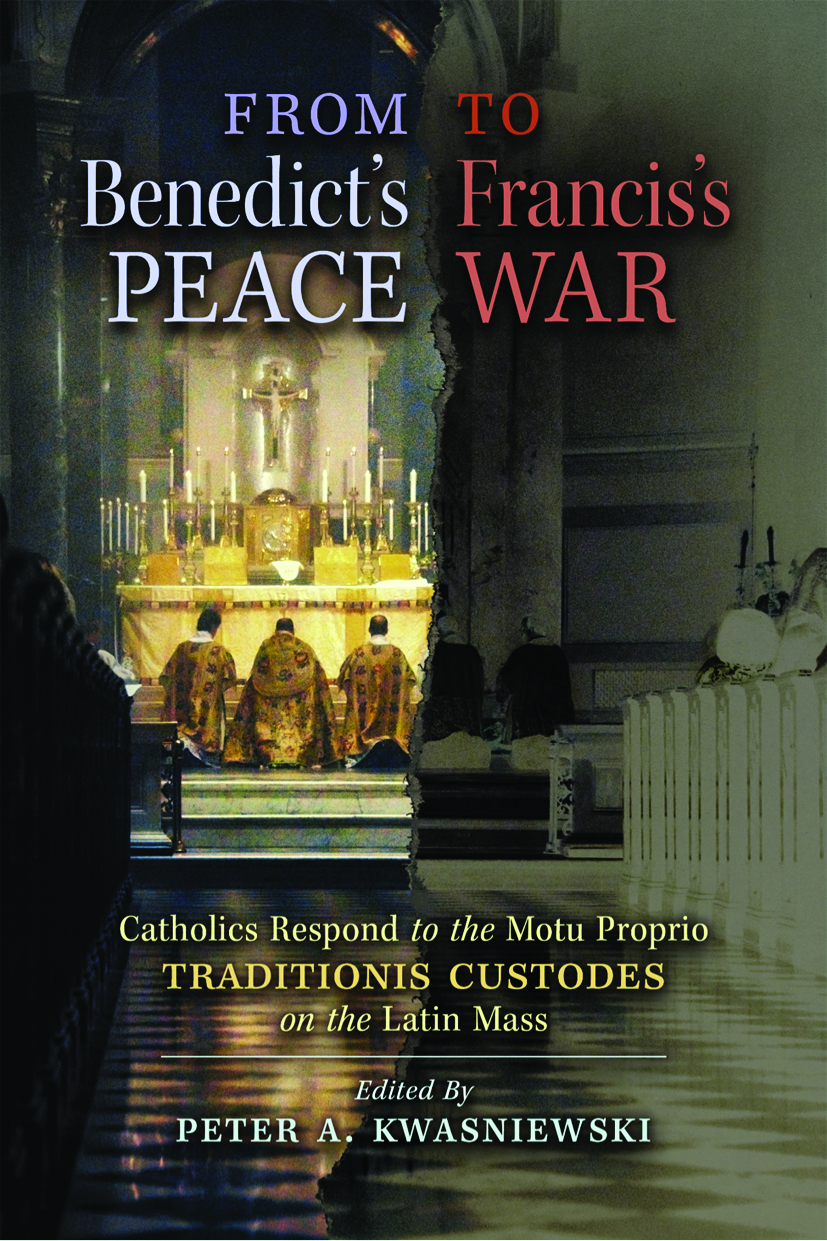Interview with Alessandro De Carolis, head of Vatican Radio News, about how the Vatican handles the Pope’s morning homilies.

Pope Francis preaches during Mass March 22, 2013, in the chapel of the Domus Santa Marta, the Vatican residence where he lives. Among those in attendance: Vatican gardeners, garbage collectors and cleaning crews.
For many people, the first two years of Francis’ pontificate have been a long and continuous catechesis, starting from March 2013. The Pope’s most-quoted statements have come from the homilies he has given at daily Mass celebrated in the chapel of the Domus Sanctae Marthae, and have become a very important part of his pontifical teaching. Still, it is surprising that these homilies have never been published in their entirety. Father Federico Lombardi, Director of Vatican Radio and the Holy See Press Office, explains this fact in the following way: “The homilies are never based on written texts, but rather they are spontaneous, and in Italian, which is a language that the Pope is very fluent in, but which is not his native language. A ‘complete’ publication of them would necessarily mean having to transcribe them and rewrite various points of the texts, since the written word differs from the oral word, and the oral word, in this case, is the original form chosen intentionally by the Holy Father. To make it short, there would need to be a reworking of the texts by the Holy Father himself, but the end result would clearly be ‘something else,’ and, besides, that is not what the Holy Father intends to spend his mornings doing.”
It is clear, given the almost familiar tone of the Masses in the Sanctae Marthae chapel, that Francis wants to maintain spontaneity in his contact with the faithful. For this reason, Vatican Radio has taken on the task of creating a summary of each of his off-the-cuff homilies.
I spoke about this important task with Alessandro De Carolis, one of the journalists at the Pope’s radio station, who described for me what goes on behind the scenes, from recording the papal homilies to the spreading of Francis’ words, which always cause a vast echo throughout the world.
Is it true that Pope Francis has explicitly requested that his Santa Marta homilies not be transmitted live, whether on television or radio?
Alessandro De Carolis: Francis started giving homilies from the very start of his pontificate: the earliest ones weren’t recorded. But with the passage of time, when their importance began to be understood, it was decided to change the homilies into news reports, obviously with the Pope’s approval. But the Pope didn’t want them to be transmitted live, only that they be limited to a summary.
The daily work behind summarizing the homilies is done by Vatican Radio journalists Sergio Centofanti (vice-supervisor of Italian-language programming) and Alessandro Gisotti (vice-managing editor of the 2 p.m. newscast). What exactly happens from 7 a.m., when the Mass starts, until the dissemination of the summary of the Pope’s words?
Every morning in the Santa Marta chapel, the technician for Vatican Radio is present for audio recordings, along with the technician for CTV (Vatican City Television), who is there for taking video. After the Mass, the audio file is brought to Palazzo Pio (Vatican Radio headquarters) and put into the digital audio system, protected so that it is accessible only to the secretaries, who first create a literal transcription, including repetitions, neologisms, etc. This transcript is ready by around 9:20 or 9:30, and is then sent to one of our three editors, who reads the text and prepares a report which includes three sound bytes of Francis’ voice, about 40 seconds’ worth, that communicate the Pope’s key thought in that homily, obviously in the editor’s opinion. The secretaries isolate these sound bytes that have been selected from the recording, and make them available to the journalist on duty. The journalist then assembles the report, which now includes the three audio recordings of the Pope, at around 10:30. By 10:40 it is ready, and it is published around 11:00 (first the text, and then the audio, which, due to technical reasons, takes a bit longer to prepare).
Who gives final approval for the publication of the text?
While at Vatican Radio we are working on the preparation of the summary of the homily, the secretaries’ transcript is sent to the Secretariat of State, which can make observations in real time: in this way, the editor can take note of any discrepancies, while preparations are still going on. Once the three “pieces” have been chosen, the Secretariat communicates them to CTV (Vatican television), where the corresponding video is isolated: the so-called “snippet” is made from this material, which normally contains one or two pieces of text.
Does L’Osservatore Romano publish your summary of the homilies?
Vatican Radio and L’Osservatore Romano work along separate lines, albeit parallel ones. In this case, the newspaper has the complete text at its disposal, and prepares its own summary. The journalists for the respective news services consult with one another only when problems arise in the interpretation of statements the Pope has made, so they can all reach a clearer understanding of his meaning.
Pope Francis delivers his homilies in Italian, which isn’t his native language. We have gotten used to hearing some Spanish expressions and some colorful “neologisms” (new phrases never used before). How do you deal with these linguistic quirks?
Pope Francis’ Italian is excellent, but he also loves speaking the language of the common people, and so his Italian is always very lively and expressive. He is also apt to use some Spanish, or a creative mix of Italian and Spanish, or even some Buenos Aires dialect, but in the end what he is trying to communicate is pretty clear. When we come across incomprehensible words — which happens rarely — we consult native speakers of Spanish.
Francis has already created many new expressions, so many that there is even a book about them. Could you tell us some of his expressions that have stuck with you, or that you have particularly liked?
There are many I could quote. For example, I was struck by the expression “nuns with flight attendant smiles.” He was referring to nuns who should be expressing all the warmth of their faith, instead of transmitting a smile that is pretty but cold and formal, such as that of a flight attendant. I also remember all the references he has made to Christians: sad Christians with an expression like “vinegar-marinated hot peppers,” “parlor Christians,” “museum Christians” and “sitting Christians,” meaning those who have lost the vitality of their faith.
The Pope’s homilies are characterized by spontaneity and familiarity with language use. Writer Vittorio Sermonti said that Francis’ use of language “has the exactness of a child’s language, and the impudence of the language of great poets.” How would you describe the Pope’s use of language?
I would like to underline one thing: most of his expressions have to do with common life, and the everyday faith life of simple people.
Pope Benedict, a great theologian, knew how to speak with enormous clarity, and this style of his was the result of years of study, and the fact that, mentally, he was a professor.
Francis’ clarity stems instead from the fact that he wants to be a shepherd who smells like his sheep, and we can hear this when he speaks: he presents the facts of the faith in the language of the common people. In doing this, he manages to explain things that wouldn’t be understood were they presented in a different way.
Recently the Congregation for Divine Worship and the Discipline of the Sacraments put out a “Homiletic Directory.” It holds up the Pope’s Santa Marta style as an example of good preaching.
Every Pope has celebrated Holy Mass every morning in the private chapel. For John Paul II, the morning Mass, as he himself said, was the most important moment of the day. In recent papal history, though, no Pope has been known to “use” private Masses to launch daily public messages. I have the impression that Francis’ Santa Marta homilies are the most significant part of his Papal magisterium. Do you agree?
It is obvious that, in these past two years, Francis has written pages of magisterium that were not born in Santa Marta, such as the broad themes of peace, defense of life, etc. However, I have heard his Santa Marta homilies, and I feel that in his exhortation, Evangelii Gaudium, he takes the homilies and transforms them into a pontifical document.
Lastly, I’d like to ask you a less professional question. In his homilies, often Francis is not very tender with us Catholics, with his sheep. Have you ever wondered why this is so?
Francis is much more indulgent with simple Christians than with the clergy. He is a Pope who hates hypocrisy, the tepid Christian, and everything that has to do with material and spiritual corruption.
He battles evil, even within the Church, with incisive and sometimes very harsh language.
But my conviction is that when the Pope’s message is conveyed to the simple Christian, his tone is sweet and tender.
In his homilies, the concept that comes across, most of all, is the mercy of God: God Who always forgives, God Who waits for us. Obviously he expects more from consecrated people.
But he always puts himself into the fray, too, and so we hear him say that even the Pope makes mistakes, even the Pope is a sinner, and even the Pope needs God’s mercy.






Facebook Comments